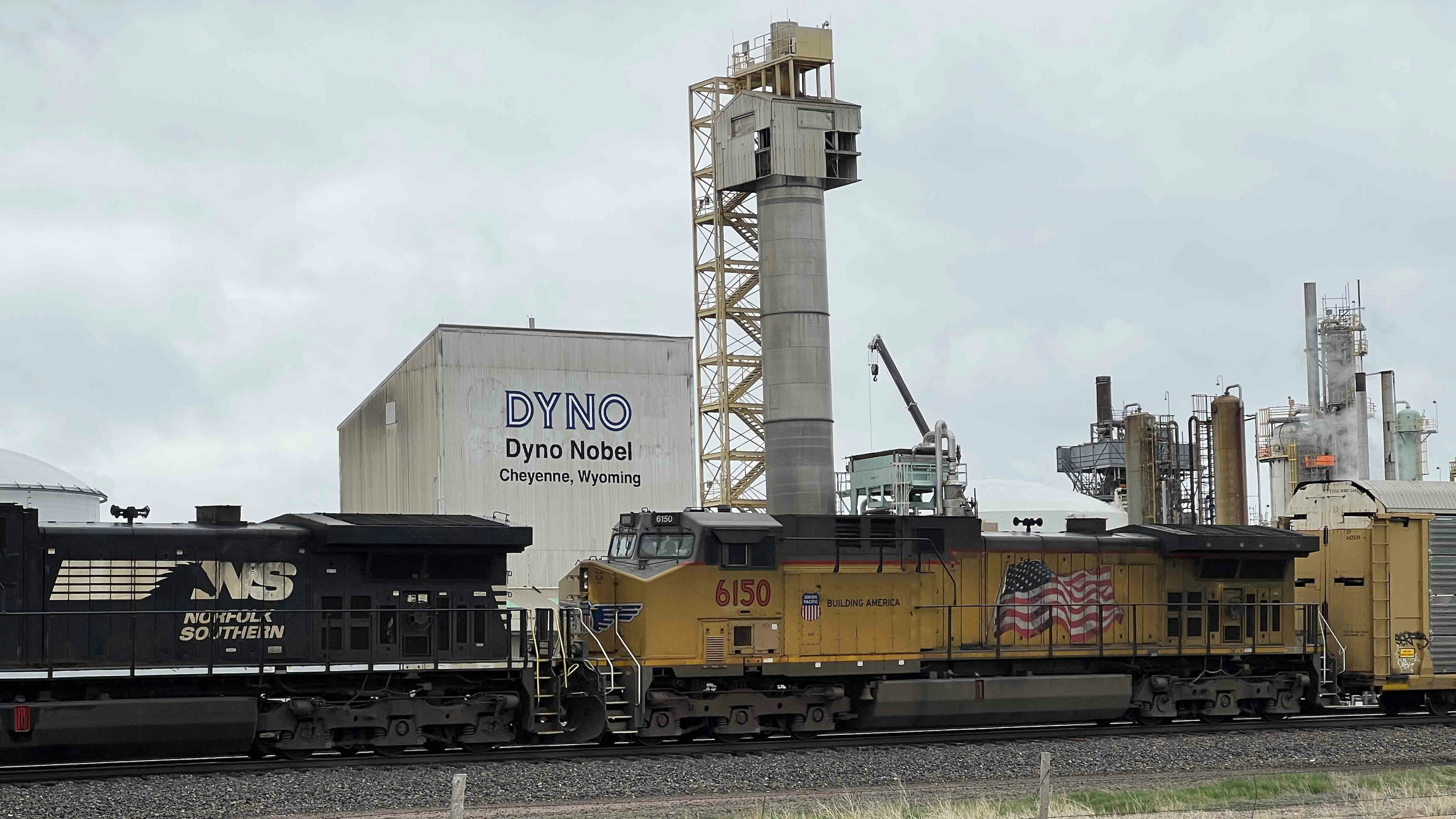Authorities are investigating what caused a railcar to lose 30 tons of ammonium nitrate fertilizer after leaving a Cheyenne explosive manufacturing facility.
The railcar left Dyno Nobel west of Cheyenne on April 12, bound for California. At a rail stop in Saltdale, California, the car was found to be empty. Dyno Nobel filed a report with the National Response Center on May 10.
Agriculture And Explosives
Dyno Nobel is a global company that produces commercial explosives and provides professional blasting services. Ammonium nitrate is used in agriculture as a fertilizer, but also is used in explosives.
It was a key chemical in the bomb Timothy McVeigh built to blow up a federal building in Oklahoma City in 1995, killing 168 people.
A company spokesperson told Cowboy State Daily that the product that was possibly spilled was an ammonium nitrate prill, which is a pellet form. The spokesperson said the chemical composition of the product is identical whether used in explosive or agricultural applications.
A technical data sheet on the company’s website states that the prills are “specifically designed to be used as a solid oxidizer ingredient for explosive compositions.”
A 2014 ScienceDirect article, however, states that high-density prills are also used in agriculture, while ammonium nitrate grains are used only in explosives.
“By itself, in pellet form, such a leak of small quantities over a large area would not create additional risks for the public or rail transport,” the Dyno Nobel spokesperson said.
Federal Investigation
Dyno Nobel told Cowboy State Daily last week that the railcar was sealed when it left the Cheyenne facility, and the seals were still intact when it arrived in Saltdale. The initial assessment is that a leak through the bottom gate on the railcar may have developed in transit.
The Federal Railroad Administration (FRA) is in charge of determining if, during the course of the incident, Dyno Nobel committed any federal violations under the U.S. Department of Transportation’s regulatory authority.
A spokesperson with the FRA told Cowboy State Daily that Union Pacific, the railroad company used in the transport, and Dyno Nobel are responsible for ensuring that railcars are properly secured.
The spokesperson confirmed that Union Pacific’s initial findings suggest that a malfunction of a component of the rail car is likely the cause of the leak.
“As Union Pacific (UP) and Dyno Nobel investigate this incident, they should engage all necessary parties, including law enforcement, to ensure any potential causes and impacts are addressed swiftly and thoroughly,” the FRA spokesperson said.
Ongoing
Union Pacific declined to comment on the status of the investigation or any details concerning it, as it is ongoing. A spokesperson with the company told Cowboy State Daily said, at this point, Union Pacific doesn’t believe there is any criminal or malicious activity involved.
Dyno Nobel said that once the results of the investigation are complete, it will implement additional procedures to ensure zero harm to the environment and the communities where it operates.
Contact Kevin Killough at Kevin@CowboyStateDaily.com





